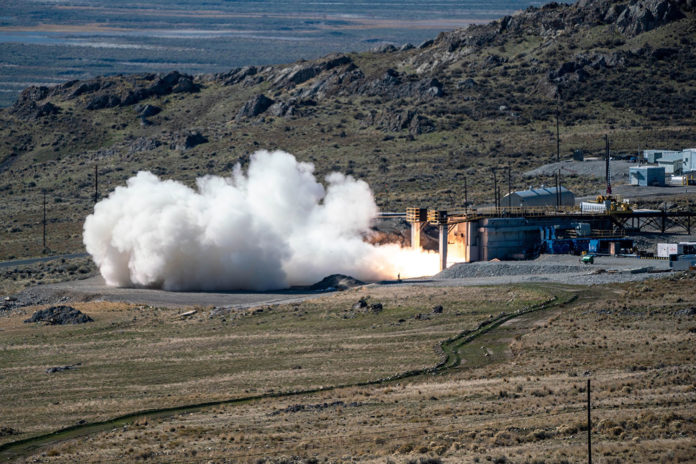The U.S.The U.S. Navy, in collaboration with the U.S. Army, has successfully conducted a static fire test of the First Stage Solid Rocket Motor (SRM) that will be used in the offensive weapon systems that will enable precise and timely strike capability against deep inland targets in contested environments.
The live-fire ground test at Promontory, Utah, marked the first time the First Stage SRM included a thrust vector control system. The thrust vector control system is a key component of the missile booster that allows the rocket motors to be maneuverable in flight.
The United States and its global rivals have stepped up their efforts to build hypersonic weapons – the next generation of arms that rob adversaries of reaction time and traditional defeat mechanisms. Defense contractors hope to capitalize as they manufacture the weapons and develop new detection and defeat mechanisms.
As part of this effort, the Navy Strategic Systems Programs (SSP) is working on a common hypersonic missile that will be used to develop the Conventional Prompt Strike (CPS) offensive hypersonic weapon for the U.S. Navy and the Long Range Hypersonic Weapon (LRHW) for the U.S. Army.
These tests are vital in developing a Navy-designed common hypersonic missile that the Navy and Army will field. Fired from a mobile launcher tube, the common hypersonic missile will consist of the first stage SRM as part of a new missile booster combined with the Common Hypersonic Glide Body (CHGB).
The Navy and Army are well on their way to testing the complete common hypersonic missile that will act as a catalyst for fielding the CPS and LRHW weapon systems. The services are working closely with the government’s national laboratories and industry to continue developing and manufacturing the common missile.
The information gathered from ongoing tests will further be used to develop the technology to a practical level for the surface-to-surface LRHW for the Army and the Navy’s CPS missile for ships and submarines, with both sharing a common design. Hypersonic weapons are capable of flying at speeds greater than five times the speed of sound (Mach 5), are highly maneuverable, and operate at various altitudes. The common design of hypersonic missiles for maritime and land-based applications will provide economies of scale for future production and is based on a growing hypersonic industrial base in the United States.
“This test continues to build momentum to deliver hypersonics capability for our warfighters in support of the National Defense Strategy,” said LTG L. Neil Thurgood, Director of Hypersonics, Directed Energy, Space, and Rapid Acquisition. “Fielding hypersonic weapons is one of the highest priority modernization areas the Department of Defense is pursuing to ensure our continued battlefield dominance, and the joint team did a tremendous job executing this test and keeping us on schedule.”
